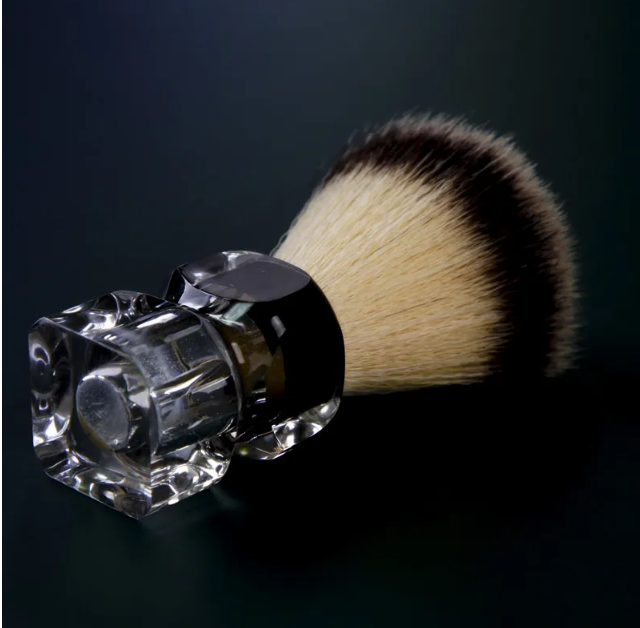101# glue
formula
Components
A. Hydroxyl Terminated Linear Polyester Polyurethane Acetone Solution
B. Polyester modified diisocyanate solution
A: B=100 (10 to 20) (general use)
100: (10~50) Metal bonding
100: (5 ~ 10) for paper, leather and other materials.
Preparation and Curing The appearance of the A component is a white or red opaque liquid, and the appearance of the B component is a yellow viscous liquid.
Applicable period: 25 days under 0.5~1d.
A: B=100:50 3~4h.
Curing conditions: Pressure 0.03 to 0.05 MPa, 5 to 6 days at room temperature, 1001.5 to 2 hours, and 0.5 hours at 130°C.
Use The glue has good adhesion, flexibility, insulation, water resistance and abrasion resistance, and can resist dilute acid and grease. Due to the bonding of metals (aluminum, iron, steel) and non-metals (glass, ceramics, wood, plastics, rubber) and bonding to one another. Can also be used as fabric, leather, polyester film, paper, sponge and other adhesive.
Polyurethane Adhesive-1
formula
Component dosage /g
A, A-2 Polyester Resin (75% Ethyl Acetate) 200
B, B-2 Polyisocyanate 100
Application period: 6h.
Prepare and cure at room temperature for 24 h at 170 °C for 1 h.
Use The glue is used to bond various metals, ceramics, plastics, etc.
JQ-2 glue
formula
Component dosage /g component dosage /g
24# polyester (ie adipic phthalic anhydride and glycerol condensate) 4 400# cement 1
2. 4-Toluene diisocyanate 4 Acetone 4
Preparation and curing Weigh in order and mix well. Validity period: 2 hours at room temperature. Pressure 0.2MPa, (105 ± 5) °C 4h curing.
Application The glue is used for bonding between metal and non-metal (non-elastomer).
AZ-1 Adhesive
formula
Component dosage /g
Polyester (adipic acid, ethylene glycol, glycerol) 100
Modified Isocyanate (Modified TDI) 500
Preparation and curing pressure 0.05MPa, curing at 60 °C 5h.
Use The glue is used for the bonding of metals, plastics, rubber, glass and other materials. Operates at -80 to 100°C.
SOI-3 glue
formula
Component dosage /g component dosage /g
Castor oil polyester 100 TDI prepolymer 80
Preparation and curing Curing for 48 h at 20°C under 0.05 MPa pressure.
Use The glue is used for bonding between metal, plastic, glass and ceramics.
Panda 404 glue
formula
Component dosage /g component dosage /g
A, polyester polyurethane 1 B, castor oil poly resin 0.7 to 1
Preparation and curing for a period of 3h; room temperature or heating curing.
The appearance of the component A is light yellow transparent liquid, and the appearance of the component B is a yellow viscous liquid. The adhesive has good adhesion, the film is soft, oil-resistant, temperature-resistant, abrasion-resistant, solvent-resistant, and shock-resistant. Can bond metal, non-metal, nylon fabrics and plastics, etc., can also be used as a polishing agent.
When bonding polystyrene foam, 50% to 100% of cement must be added to the glue.
Panda 202 Rubber
formula
Component dosage /g component dosage /g
A. Polytriphenylmethane triisocyanate 20 Antioxidant T 2
B. Neoprene 100 A: B=20:80
Zinc oxide 5 solvents are:
Magnesium Oxide 4 Toluene: Ethyl Acetate = 2:1
Preparation and curing of the two materials to be glued materials, to be placed at room temperature for 5 ~ 15min, let the solvent evaporate, but do not allow excessive drying, and then laminated, and then pressed firmly to the next day can be. Room temperature curing.
Use The glue is used at a temperature of -20 to 60°C and can be used to bond non-metallic materials such as leather, rubber, fabrics, linoleum, various Luo foam plastics, polyvinyl chloride, and other metal materials (steel, aluminum, copper). There is a certain degree of adhesive bonding and different materials can also be bonded to each other. At room temperature, the film is soft and has a quiet acid, water, and alkali resistance.
A shave brush's price is usually determined more by its bristle load than any other factor, except for brushes with very exotic handles. The most expensive brushes often use exotic materials in the handle. The bristles are fixed together into a knot that is installed into the handle. The best quality brushes are hand knotted. Badger and boar brushes are the most commonly found animals used for shaving brush fibers. Badger species include the Eurasian badger and the hog badger.

Synthetic shave brushes, most often made using nylon bristles, are available in a range of prices and gradations in quality. Comparable to traditional shaving brushes, synthetic fiber brushes can quickly create a rich lather using relatively little shaving soap or cream. The synthetic fibers dry faster than natural hair and are less sensitive to everyday use.
Boar's hair brushes are relatively inexpensive, but can be of very high quality. A well-made boar brush will break in with use; the bristles begin to split at their tips, resulting in a brush that is very soft but has considerable backbone. Unlike badger hair and synthetic fibers, boar bristles absorb water, so the brush should be soaked before use.
Badger hair brushes come in a variety of grades, but there is not an industry standard that specifically defines grades of badger hair. Generally speaking, though, there are basic classifications that many manufacturers use to describe the quality of hair used in their brushes
Shaving Brush,Skincare Shaving,Shaving Brush Set,Shaving Brush Kits
SAMINA FORAM (SHENZHEN) CO., LIMITED. , https://www.saminabrush.com